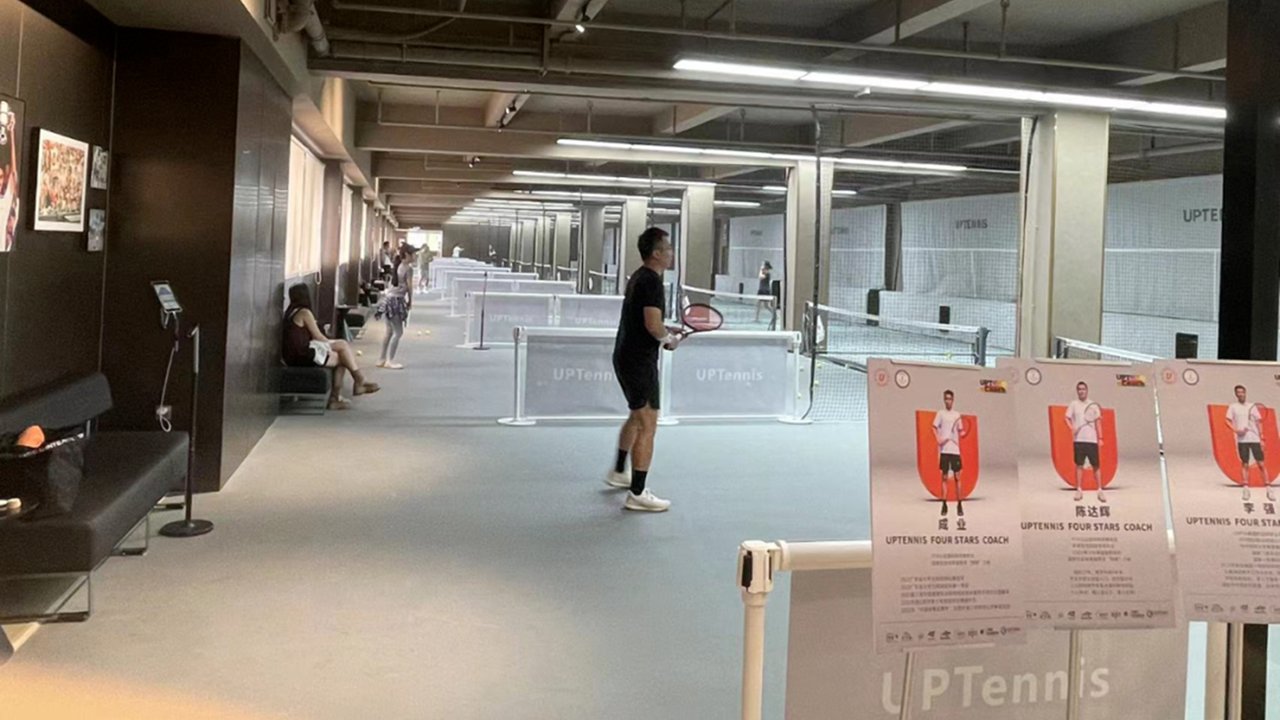Tech-driven indoor tennis courts gain ground
From: Shenzhen Daily
Traditional outdoor tennis courts require large, open spaces, which are increasingly scarce in first-tier cities like Shenzhen. To address this, compact, smart indoor tennis courts are being built within underutilized spaces like the high-ceilinged commercial podiums of tall buildings and on idle rooftops. These innovative venues are quickly gaining popularity among tennis enthusiasts.
Shenzhen-based UPTENNIS opened its first store dedicated to indoor tennis practice courts Jan. 1, 2024.
In just a year and a half, the company has expanded to over 30 stores in Shenzhen, with more than 10 additional stores in the pipeline. Its nationwide footprint now covers major cities such as Guangzhou, Beijing, Shanghai, and Chengdu, with a total of over 50 stores. According to the company's plan, it aims to reach 100 stores across the country by the end of this year.

Tennis players practice at UPTENNIS’ indoor courts in Duoli Industrial Park, Futian District. Zhao Meng
According to the company's founder, standard tennis courts typically require up to 670 square meters. However, UPTENNIS' smallest store, at only 300 square meters, can accommodate three to five practice courts. By using intelligent ball-feeding machines and optimizing the layout, these compact courts can accommodate nearly five times as many people compared to traditional courts.
Intelligent tablets installed in the venues are capable of analyzing players' shots in real time and automatically generating analysis reports that provide suggestions for improvement. This technology enhances the training experience and helps players refine their skills more efficiently.
Such indoor courts are especially appealing to people who want to avoid excessive exposure to the sun. These facilities offer a convenient and enjoyable environment for all tennis enthusiasts, regardless of the weather or time of day.

A rooftop tennis court bakes under the scorching sun. UPTENNIS' indoor facilities offer a sun-free alternative for enthusiasts seeking comfort and convenience. File photo
"I don't have to worry about getting tanned. During my lunch break, I can grab a cup of milk tea, play for an hour, take a shower, and then head back to work. It's so convenient," said a woman exercising at an indoor tennis court in the Duoli Industrial Park in Futian District.
The company plans to introduce virtual imaging technology, enabling users to participate in "man-versus-machine battles" or feel like they're playing on the legendary red clay courts of Roland Garros — the home of the French Open.
The verticalization of sports is gaining momentum in China, emerging as a solution to the challenge of limited urban land for sports facilities.
A prime example is the Jianshang Sports Complex in Longhua District, Shenzhen, which is recognized as China's first vertical sports venue. This innovative complex features a high-rise split-level design, with a variety of sports facilities stacked vertically. This approach not only maximizes the use of limited urban space but also offers a wide range of sports activities for the community.